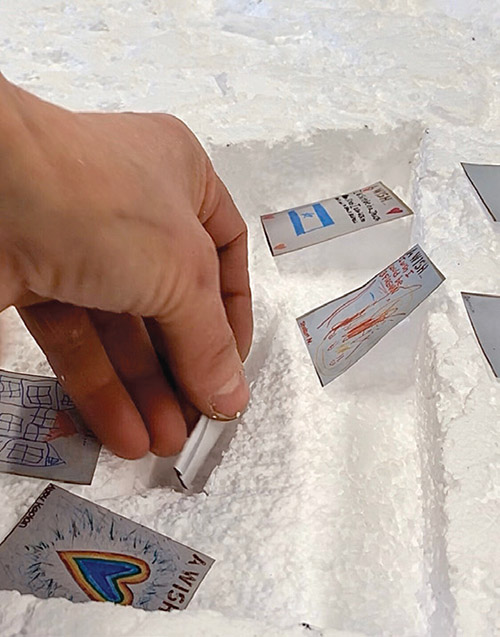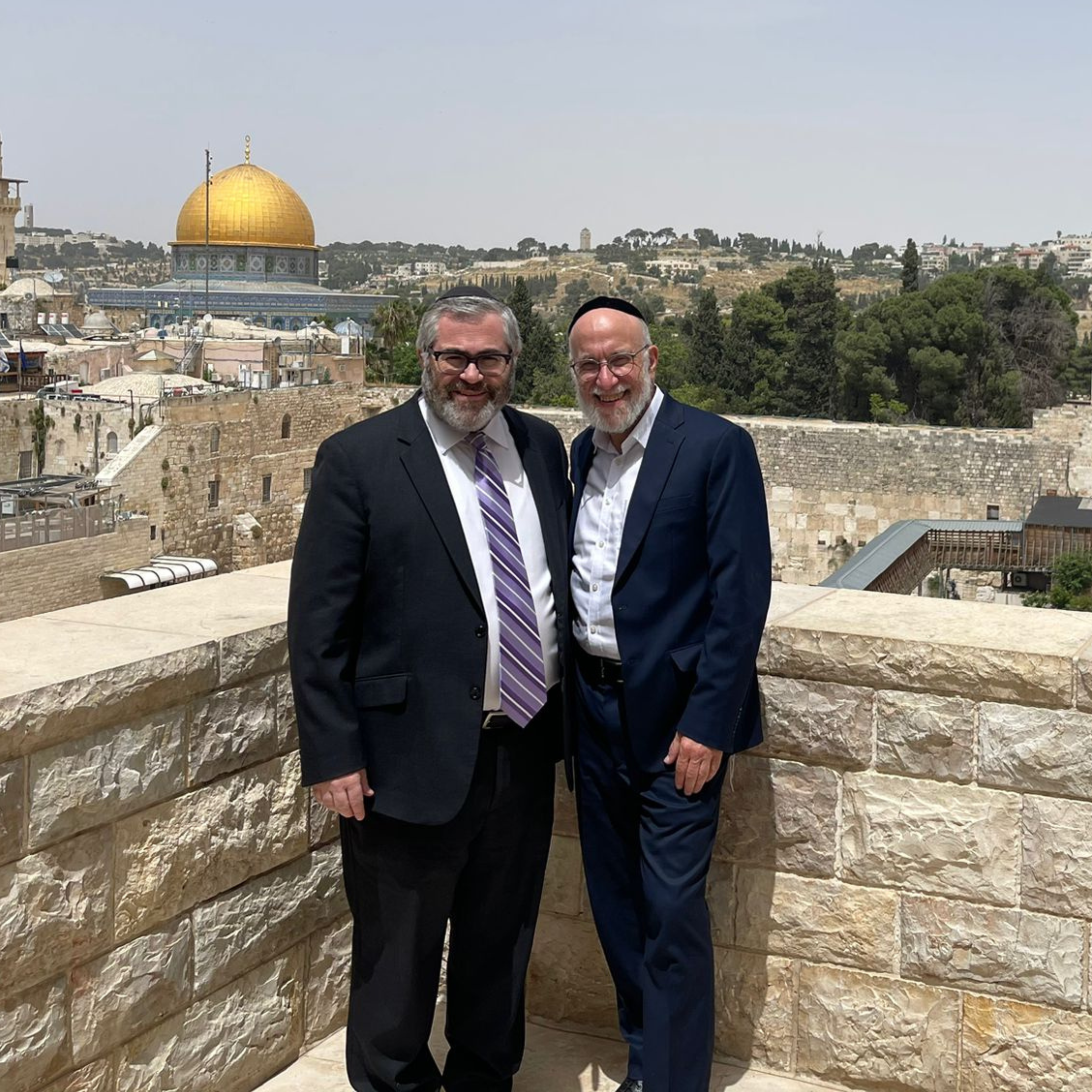


(Courtesy of Lifetown) One of the most moving experiences for people visiting the Kotel, the Western Wall, in Jerusalem is when they place a note with a request for blessings inside the wall.
Which is why, when artist Miriam Sasson created a replica of the Kotel for the new LifeTown center, she wanted to include notes from the children who would be using the building. What Sasson could not have envisioned was that the project would go beyond the children at Friendship Circle and would become a focal point for the Judaic programs at LifeTown, a fully inclusive center that empowers people with special needs in Livingston.
“I teach art class on Sunday mornings at the Friendship Circle and gave the children a paper that said ‘My Wish.’ On that paper each child wrote, drew or painted their wishes. I told them I would place their wishes inside the stones of the LifeTown Kotel. I explained to them that their wishes will forever be a part of that Kotel. People in the community started to hear about what I was doing and day by day more people came and asked if they could also take a part of this opportunity. They were excited to be included in something so special and tied to the historic roots of Judaism.”
The list of people who wanted to have their notes enshrined in the Kotel at LifeTown multiplied to include local Holocaust survivors who were touched by the project.
“When you have a wish and write it down, its one step closer to becoming a reality,” Sasson explained. “And when you put it in this place, you are planting your dreams to come true. The Kotel wall inside LifeTown is beautiful, but it’s not just a beautiful place you can only admire with your eyes. It’s a spiritual place you can feel in your soul.”
A native of B’nei Brak, Israel, Sasson has long loved art and began teaching herself the basics at a young age. For years, she worked primarily in oils and created powerful portraits that captured the attention of all who saw them. Sasson moved to the United States in the early 2000s and began building a reputation as an artist on this side of the Atlantic. As she pushed her artistic limits and began to explore new mediums, boundaries and modes of art, she solidified her work as a master artist.
For a Jewish communal Holocaust remembrance dinner in 2015, for instance, Sasson wanted to create a portrait of a child who had lived through the terrors of the concentration camps. To convey the tough, hard years of the Shoah, she didn’t want to paint with oils on canvas. Instead, she used nails, wood and string, raw materials that spoke of the harshness of that horrific era.
“I love to break the givul, the limits, of what is normally done, and between what we see and what is in our dreams,” she explained.
Sasson’s dedication to her craft first brought her to the attention of Friendship Circle several years ago when executive director Rabbi Zalman Grossbaum was looking for someone to create artwork for the “Exodus Experience” Passover program.
As Sasson recalled, “Zalman asked if I would do a carving of a giant sphinx for the set. I said I had never done one before, but I would give it try. They loved what I did and years later asked me to create the Kotel in LifeTown.”
According to Grossbaum, the Kotel Sasson has created far exceeded anyone’s expectations and is very much the “heart” of LifeTown.
“Geographically speaking, the Kotel is in the center of the building,” he explained, “and emotionally it has brought so much joy and meaning to people. The Lubavitcher Rebbe, Rabbi Menachem Mendel Schneerson, of blessed memory, believed that individuals with special abilities have special souls and connect on a soul level to things beyond what the average person can experience.
“And when you see them in LifeTown gazing up at the Kotel, I think they really feel the heart and soul that went into it,” Grossbaum continued. “We had another company who proposed to do the work, but when you look at the samples that they sent and compare them to the Kotel that Miriam created there is simply no comparison. The colors, the texture and the feelings they invoke [are] very powerful. You don’t have to tell anyone it’s the Kotel or how special it is.”
To create the Western Wall replica, Sasson started with dozens of large, thick styrofoam boards. Each and every piece was chiseled, molded, coated and painted to give it the look of real stone.
As she worked, Sasson kept in mind how she feels whenever she visits the real Kotel in Jerusalem.
“It was very important to me to succeed in conveying the feeling of standing in front of the Western Wall in Jerusalem. The line that guided me throughout was the direct connection between us and God, between the physical material, and the spiritual energy in us,” Sasson said, adding, “Since I was raised in Israel and visited the Kotel many times, I absorbed the intense emotions when facing the Western Wall. The feelings of suffering, grief, joy; the excitement of the liberation of the Western Wall; and the sense of miracles coming true for us were all there.”
“It all connected me into this piece. The wall in Jerusalem is not just a stone wall, it is a miracle!” she continued. “And the fact I made a replica of it in LifeTown and one that’s resonated with people, it is as if a spirit of God entered this place.”
Beyond the emotions that the Kotel sparks in all who see it, LifeTown’s Kotel is also a part of the cornerstone of an immersive Judaic program and will be one of the first places that Hebrew schools and day schools visit during trips to the LifeTown Shoppes. On those visits, the Shoppes will turn into a mini-Israeli shuk. Signs will be in Hebrew and shekels will be the currency of the day.
The Kotel at LifeTown was sponsored by Arlene and Michael Gordon in memory of Michael’s Aunt Rose, who survived the Holocaust, but was not blessed with children of her own. The synagogue where the Kotel stands in LifeTown was sponsored by Sharon and David Halpern.
Said Grossbaum, “When God destroyed the Temple, the Beit HaMikdash, He left us the Kotel to remind us that we have greater aspirations. That we have hope and dreams. This artwork is a mirror into Miriam’s soul. She wanted this Kotel, like the Kotel in Jerusalem, to remind people that there is always hope and that God is listening to our prayers.”











